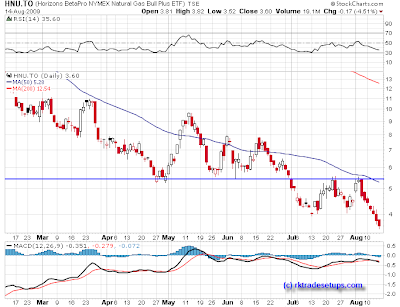There has always been arguments between the fundamental and technical analysts on which method works. For those who may be new to this:
A fundamental analyst will look to the underlying of the stock, at what the company does, how it makes it money, what are the business risks, et cetera. They can get as deep as coming up with different ratios to compare the "health" of the companies compared to their competitors in order to conclude if the stock is over-valued or under-valued.
A technical analyst on the other hand, does not care about the underlying company and its performance. His trades are based on market psychology - the fact that there are million of people all with the same human emotions of greed and fear buying and selling these stocks. He bases his trades on resistance & support lines, and the different trendlines which may be formed in the process of everyday trading.
Now, why do I prefer technical analysis?
I believe that in the short-term the markets are manipulated on a massive scale. I don't mean in an illegal way, although I'm sure some of that is going on too, but manipulated based on what the media feeds the public. Basically I think the market environment would be MUCH different with the absence of the media, which serves entirely as a massive herding tool for the gullible sheep. With all this information being fed to us through the channels, it is very hard to distinguish what the true fundamentals are. Through loopholes and financial engineering, an ever increasing number of companies are stating misleading numbers and news releases; economic stats are constantly revised; and analysts interpret results to "spin" them in a favorable manner for their firms - there is no trusting these "fundamentals". Not to say that fundamental analysis does not work, it does if you do your own research and analysis and have a long-term horizon, because in the short-term the stock prices do not move according to true underlying values. The stock may continue to go down despite the fact that it is way under-valued and we've seen that in the down turns of January and March 2009.
A technical analyst is like a doctor. When a patient goes in to the office with a problem he tells the doctor what is wrong and maybe guesses at what could have caused the problem. However, the doctor does not base his diagnosis entirely on the patient's word, he runs his own tests like the taking the patient's temperature, blood pressure, or taking blood samples for further testing. The patient may lie or be misinformed but the test will reveal the state of the body. The patient may say he just has a headache, but the tests may point to deeper problems which have yet to surface. In that same way, a technical analyst tries to run tests to figure out the state of the market, irregardless of other data - presented by the company or the media.
For example, months before Enron fell apart, the stock was dwindling lower. There was evidence of massive selling by the people "in the know". However, the executives (who themselves were selling stock), told the public that everything was just fine.
A technical trader tries to "measure" market psychology and "run tests" to find patterns which may suggest which way the security may move. After all, the ultimate goal is making a profit. It doesn't matter what the underlying fundamentals are as long as the security moves in your favor.










































